|
Advertisement
|
Extraordinary!

DescriptionExtraordinary is a superhero-themed strategy card game by designer Roger Alan Cotton for 2 players, ages 12 and up. PREMISE Players each control a team of seven super-powered characters who battle through an episode from an original comic book issue story line. Each Episode is comprised of seven Hero Objectives and seven competing Villain Objectives. In order to complete an objective, a hero or villain must use a requisite super power (listed on the Objective Card) to perform a specific Feat (listed next to the super power on the Objective Card). To complete the Feat, a character must roll a result that equals or exceeds the Objective's target Completion Point Value (CPV). Should the character successfully perform the Objective Feat, an opponent's character may still attempt to thwart it. This is accomplished in the manner explained above. If the Thwart Feat roll result equals or exceeds its target CPV, it is successful, and the opponent's Objective Feat fails. In addition, the thwarting team gains a two-point advantage on its next turn, when attempting to complete its own objective. Either team may attempt to complete their unfinished objectives on their subsequent turns. However, as soon as either side completes an objective that isn't thwarted, that part of the Episode story line is "locked down," and the Objective Card is "won" by the team that completed it. ______________________________________________________________________________________ OBJECTIVE Win four or more of the Episode's seven objectives. ______________________________________________________________________________________ GAME SET UP 1. Decide who will play the Heroes League and who will play the Villains League. Place the appropriate Player Mat on the playing area in front of you. 2. Decide which Comic Book Issue you will be playing. Bring out this issue’s corresponding Issue Cover Card and place it off to the side of the play area, between the players for reference. Next to this card, place that Issue’s Episode Card, and the corresponding Episode Objective Cards (stacked face-down and in sequence). 3. Each Player selects (7) super heroes or super villains and places them face-down on the playing area before them. These characters should have power icons and keywords on them that match as many power icons and keywords listed on the Episode Objective Cards. Shuffle each of these characters’ (5) Action Cards in with the (25) core cards in your League Deck. 4. Take all of the Resource Cards and separate them into four face-down card stacks: NPCs, Powers, Tech, and Upgrades. Shuffle each card stack and flip face-up the top card of each stack. 5. Determine First Player Each player rolls (1) die. The player who rolls the highest result is the Active Player during Turn 1. Reroll any tied roll results. From Turn 2 onward, players alternate being the Active Player. 6. Both players flip their characters face-up. 7. Draw (7) cards each to form your starting Hands. ______________________________________________________________________________________ GAME TURN PHASES Each game turn in XO! is divided into five phases: 1. Status Check Phase ______ 1. STATUS CHECK Phase (This phase is skipped during the first turn) Remove Status cards tagged to any Characters or Objects in play who were <Blinded>, <Short-Circuited>, <Staggered>, <Stunned>, or <Winded>. Characters or Objects in play who are tagged with the <Damaged>, <Injured>, <Incapacitated>, <Prone>, <Sabotaged>, or <Trapped> Status Cards retain their Status cards until other cards are played that instruct players to remove them. 2. CARD DISCARD / DRAW Phase On the First Turn, both players draw (7) cards to form their Hands. At the start of every turn thereafter, players may each discard up to (2) cards from their Hands, and then draw back up to (7) cards. 3. ATTACK Phase During this phase, the Active Player may attack with as many characters as he wishes (as long as those characters are able to do so, and have the requisite Energy Cards to use cards from the Active Player’s Hand). NOTE: Card play may change the order of some attacks, regardless of who the Active Player is at the time. - Combat Rounds Each Combat Round is divided into three segments: Hit Determination segment, Damage Effect Determination segment, and Counterattack segment. Each attack is resolved in whatever order the Active Player desires. The Responding Player may play applicable defenses and modifier cards to counter the attacks. The Active Player indicates which character in play is attacking, and who the defending enemy character or target will be. Hit Determination Segment During this phase segment, you determine if an attack hits or misses. The Attacking Character (Attacker) rolls the number of dice indicated by the value on his or her card’s Attack Icon. The Defending Character (Defender) rolls the number of dice indicated by the value on his or her card’s Defense Icon. If the ACV exceeds the DCV, the attack hits, and the Defender takes damage. Proceed to the Damage Effect Determination segment. Damage Effect Determination Segment During this phase segment, you determine how much damage the Defender sustains, and what effect, if any, the attack has on the Defender’s Readiness Status. The difference between the Attacker’s ACV and the Defender’s DCV is the amount of damage the Defender sustains. This Damage Value (plus any Attack Effect Damage) is compared to the Defender’s Health Value which is listed within his/her card’s Health Icon: If the amount of damage sustained is less than the Defender’s Health Value, the character remains in play. If the attack has a listed effect, that attack effect is now applied (see Attack Effects). - Attack Effects Different attacks have different effects. For <Blinded>, <Burned>, <Frozen>, <Horrified>, <Knocked Back>, <Staggered>, or <Stunned> attack effects, tag the Defender’s card with the appropriate Status card. Tagging a card means to attach a Status Card to it. Follow the instructions on attached Status Cards to determine their impact on characters and objects for the rest of the turn. - Moffed Attacks and Defenses If a Defender or Attacker rolls (1) or more dice, and all of the roll results equal (0), that defense or attack is considered to have “monumentally failed” (moffed). When the Defender’s DCV is moffed, s/he sustains (+1) Die of Damage during the Damage Effect Determination segment. When the Attacker’s ACV is moffed, the Defender has the opportunity to immediately counterattack. Counterattack Segment A Defender may only counterattack if s/he has the Counterattack ability, or if the Attacker moffed his/her ACV. To resolve the Counterattack, follow the standard combat resolution steps listed above. The Counterattack’s Damage Type is determined by the Defender’s Superpower Icon (listed on the Character card’s upper-left corner). Once all of the Active Player’s attacks have been resolved, his Attacks Phase ends. - AOE Damage Effects Some attacks indicate they are AOE Attacks. This means they are Area of Affect attacks which affect both the defending target of the attack and any characters adjacent to the Defender. 5. FEATS COMPLETION Phase During this phase, the Active Player assigns a ready character in play with the requisite Power icon (or Keyword) to attempt a feat that will complete his league’s current Episode Objective. - Resolving Feat Attempt The Active Player rolls as many dice as s/he can to attempt the feat (based on the numbers indicated on the acting character’s card, as well as on any applicable cards from the Active Player’s Hand): If the Feat Attempt roll result (plus any modifiers) equals or exceeds the Feat Completion Value (FCV) indicated within the Completion diamond, the feat is successfully completed. To do this, the Responding Player’s character must have the requisite Power icon or Keyword to attempt the thwart: If the Thwart Attempt roll result (plus any modifiers) equals or exceeds the Thwart Completion Value (TCV) indicated within the Completion diamond, the feat is successfully completed. Once all seven Episode Objective Cards have been completed, the player with four or more of them wins the game. 6. TURN RESOLUTION Phase Once the Active Player has finished attacking and attempting a feat, his turn is over. If all seven Objective Cards are completed, the game ends, and you proceed to Scoring. Otherwise, the next player becomes the Active Player, and the game proceeds.______________________________________________________________________________________ COMBAT DICE Each player gets (7) six-sided dice to use during the game. The Heroes Player uses the White Mask dice and the Villains Player uses the Black Mask dice. Each combat die has six sides with different values listed on them. One side has the (0) value, two sides have the (1) value, two sides have the (2) value, and the last side has the (3) value. Game DiscussionsAdd CommentYou need to be logged in to comment. Insert Bullet List Please enter at least one item. Item: Item: Item: Item: Item: Insert Numeric List Please enter at least one item. Item: Item: Item: Item: Item: Insert Link Please enter the link of the website Optionally you can add display text Insert Email Please enter the email address Optionally add any display text Insert Image Please enter the link of the image Insert YouTube Video Please enter the link of the video MarketplaceNo listings at the moment. Do you own this game? Click here to list it for sale.
|
Best Sellers
Board Games
|
||||
Latest Searches: Bang! | Boston edition monopoly | seaside monopoly | Who’s a cunt | battle | Dinosaur Train Giant Playing Cards | scrabble onyx editon | u boot | alphabetic | zeta | Super racks | '>"> | Harry potter monopoly limited edition | Karobs | girls night | Cards Against Humanity | forbidden bridge | watergate | tapestry | dumboard rules | romantic sensations | FurReal Friends | pogromly | fast slingpuvk | patent drawings | rummy royal mat | bey blade | super soaker water blaster | Laurelopoly | Number Board
All Rights Reserved

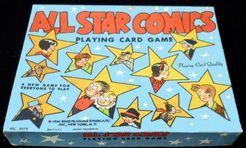
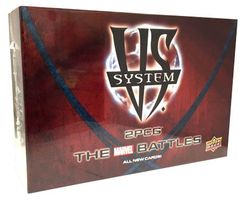
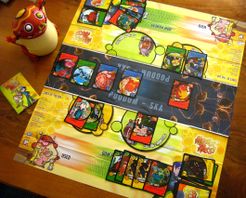

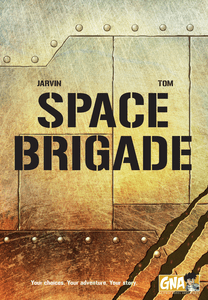
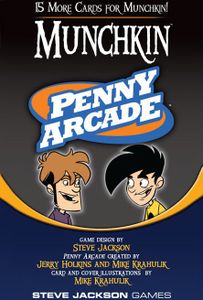

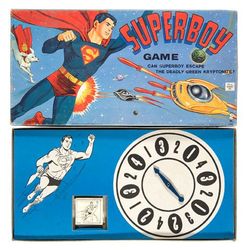


Comments (0)